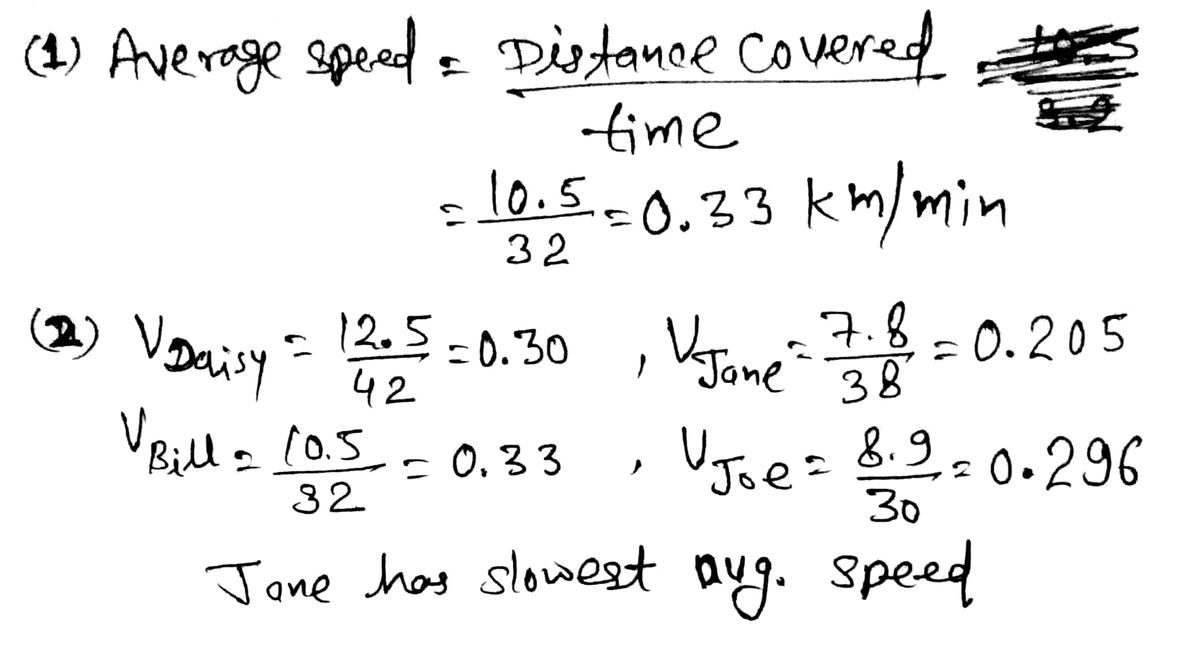Name: 5. A change in velocity means a change in 1. What is Bill's average running speed? Distance covered (km) a. direction only b. speed only c. speed, direction, or both d. always both speed and direction e. I don't know 6.As you brake your bicycle, your velocity changes from 20 east m/s to 10 east m/s in 5 seconds. What is your acceleration? Time Runner (min) Daisy 12.5 42 Jane 7.8 38 Bill 10.5 32 Joe 8.9 30 a. 0.33 km/min b. 3.0 km/min A. 10 m/s2 west C. 3.3 km/min d. 330 km/min e. I don't know 2. Which runner has the slowest average speed B. 2 m/s2 east C. 10 m/s2 east D. 2 m/s2 west E. I don't know for this run? Time 7. What was Swimmer C's average speed? Graphing Motion Distance Runner covered (km) (min) Daisy 12.5 42 2,400 Jane 7.8 38 2,200 Bill 10.5 32 2,000 Joe 8.9 30 1,800 Swimmer C 1,600 a. Bill E 1,400 b. Daisy Swimmer B 1,200 C. Jane d. Joe 1,000 e. I don't know 3. If an óbject has a constant velocity, then it 800 600 Swimmer A 400 a. has a negative acceleration 200 b. has an acceleration of zero c. has a positive acceleration d. is not moving 10 20 30 Time (min) e. I don't know 4.The speed of light in a vacuum is 300,000,000 km/s. How long does it take light to travel A. 4.8 km/h 150,000,000 km from the Sun to Earth? a. 2100 seconds B. 2.4 km/h C. 2400 km/h b. 8.3 minutes D. 4800 km/h C. 4500 seconds d. 0.25 hour e. I don't know E. I don't know Distance (m)
Displacement, Velocity and Acceleration
In classical mechanics, kinematics deals with the motion of a particle. It deals only with the position, velocity, acceleration, and displacement of a particle. It has no concern about the source of motion.
Linear Displacement
The term "displacement" refers to when something shifts away from its original "location," and "linear" refers to a straight line. As a result, “Linear Displacement” can be described as the movement of an object in a straight line along a single axis, for example, from side to side or up and down. Non-contact sensors such as LVDTs and other linear location sensors can calculate linear displacement. Non-contact sensors such as LVDTs and other linear location sensors can calculate linear displacement. Linear displacement is usually measured in millimeters or inches and may be positive or negative.



Trending now
This is a popular solution!
Step by step
Solved in 3 steps with 3 images









